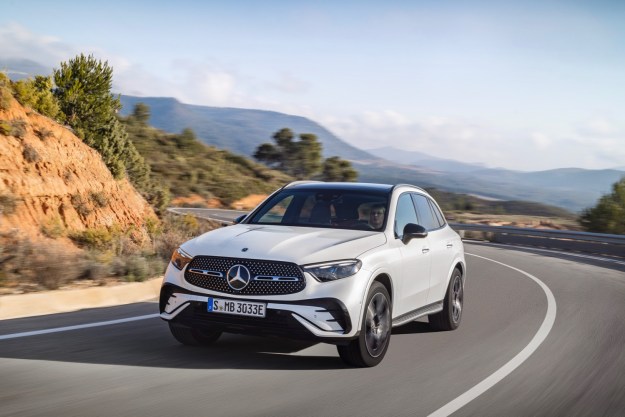Mercedes-Benz invented the “four-door coupe” with the first-generation CLS-Class, but the segment isn’t standing still. The Audi A7 and BMW 6 Series Gran Coupe arguably rival the current CLS in aesthetic appeal and luxury. Accordingly, Mercedes is giving the car that started it all a facelift.
The 2015 CLS aims to keep buyers’ attention with updated styling, a refreshed interior, and some new tech options. Will that be enough to fend off its German rivals?
The biggest visual change for 2015 is a set of new Multibeam LED headlights in revised clusters. The Multibeam system can redirect light to keep other drivers from being blinded, even with the high beams on, although Mercedes hasn’t confirmed this feature for the U.S.
The 2015 CLS also gets a diamond-pattern grille similar to the one on the CLA-Class, bringing the two cars even closer together in terms of styling.
The rest of the exterior is pretty much unchanged, showing muscular styling that actually looks a bit overwrought compared to the A7 and 6 Series. Wagon fans will also bemoan the continued denial of the Shooting Brake model to U.S. customers.
The interior is highlighted by a new 8.0-inch center-stack display for Mercedes’ COMAND infotainment system. There’s also a new COMAND Online feature for smartphone connectivity. Linguatronic voice control will hopefully help to curb distracted driving.
Under the hood, the 2015 CLS gets the same engine choices as last year, with a little more power. The CLS550’s 4.6-liter twin-turbocharged V8 now produces 408 horsepower, while the CLS63 AMG’s 5.5.-liter twin-turbo V8 produces 557 hp. Topping the range is the CLS63 AMG S-Model, with 585 hp.
All CLS models come with a nine-speed automatic transmission, and all-wheel drive is once again mandatory on AMG versions. The base CLS550 is also available with rear-wheel drive.
To make sure that power doesn’t get out of hand, the 2015 CLS deploys a variety of safety features, including standard Collision Prevention Assist Plus automatic braking, and several optional features from the flagship S-Class. These include Distronic Plus with Active Steering, Stop & Go Pilot, and Parktronic parking assist.
The 2015 Mercedes-Benz CLS-Class will hit U.S. showrooms this fall. Pricing and final specifications will be announced closer to the on-sale date.
Editors' Recommendations
- 2025 Mercedes-Benz EQS sedan gets new face, bigger battery
- 2024 Mercedes-AMG S63 E Performance first drive review: high-performance plug-in
- Mercedes-Benz EQE SUV first drive review: ’90s look, cutting-edge tech
- We need more 7-passenger EVs, but the 2023 Mercedes EQS SUV has room to improve
- Lux and refreshingly livable, Mercedes’ EQE moves EVs mainstream


